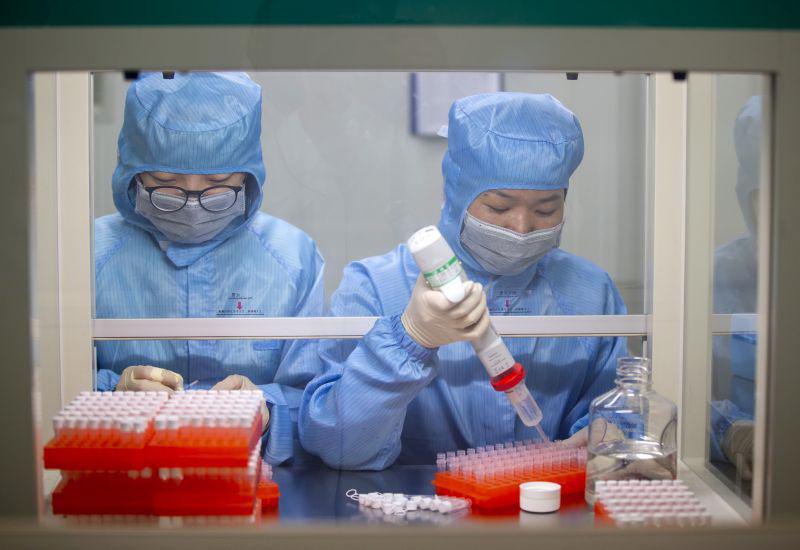The rigour of China’s social system seems to be passing the stern test presented by this public health emergency
On July 1st 1941, the Soviet Politburo created the Council for Evacuations, an emergency governing body tasked with organizing the evacuation of people, food, farm-livestock, other goods and entire factory complexes to the Urals region before they could be captured or requisitioned by the advancing Wehrmacht. The deputy-chairman of this committee, a 37 year-old bureaucrat named Alexei Kosygin, was given special responsibility for the evacuation of factories, with a priority placed on industries connected to the Soviet military-industrial complex.
Between July and November 1941, he succeeded in expediting the evacuation of no fewer than 1,300 entire factory complexes, and their rapid reassembly and re-commencement of production. One such factory was #183 in Kramatorsk, which employed 60,000 workers for 24-hour tank-production. The factory was still operational in Kramatorsk in October 1941, was evacuated in November, and resumed full production in Chelyabinsk in December. Kosygin went on to have a long and illustrious Politburo career – minister for light industry, minister for finance, architect of the 1965 economic reforms package, chairman of GOSPLAN, and Chairman of the Council of Ministers (official Soviet head of state) for 15 years before his death in 1980.
The Chinese government’s response to the coronavirus outbreak might not quite match those Herculean feats of crisis-management, but the news of the past few days is nonetheless somewhat reminiscent of Kosygin’s achievements. In Geneva on January 29th, the World Health Organization team assembled to address the coronavirus outbreak gave a glowing assessment of the Chinese government’s response to the crisis.
Dr. Maria Van Der Kerkhove of the WHO stated that one of the reasons why the growth in coronavirus diagnoses has been so rapid is because the Chinese government had published a full genome-mapping of the new variant within days of the initial outbreak, making diagnosis easier. This is possible partially because China has been producing an academic golden generation of doctoral candidates in the biological sciences over the past 15-20 years. China has got an absolutely massive academic talent-pool in the life-sciences, especially in molecular biology, microbiology and biochemistry.
In other words, Dr. Van Der Kerkhove argued, the rapid increase in newly diagnosed cases should be interpreted as a positive rather than as a negative, insofar as it was an indicator of the proficiency of the Chinese response.
It is historically unprecedented that the entire genome-sequence of a new virus is published within days of the virus’ first appearance.
Dr. Michael Ryan, Executive Director of the WHO Health Emergencies Program, stated that “China and Chinese scientists have performed probably the most rapid characterization of a novel pathogen in history, and that was shared immediately. Multiple sequences were shared immediately on global platforms.”
Previously Dr. Ryan had commented on his visit to China in the previous days, stating that “China is doing the right things, and China is responding in a massive way….What I took away from that mission was the absolute, relentless and focused determination of the government of China to put the health of people in China ahead of anything else at this point, and to take what are significant economic and other hits in order to put the health of people first. The levels of meetings, the numbers of meetings and the attendance at those meetings was unprecedented in my memory in terms of a government’s commitment to do that….”
Answering concerns raised by a Bloomberg correspondent regarding the transparency of the Chinese government’s response, Dr. Ryan described the Wuhan regional government’s response and dissemination of information as “state of the art,” saying that the Wuhan government’s public website had declared a red alert extremely early, and that an extremely impressive quantity of new information contained in their daily updates had been published since December 31st/January 1st. Dr. Ryan said “I was involved in 2002/2003 in SARS, and I can tell you from direct operational experience that there is no comparison between the behaviour of China then and the behaviour of China now.”
He described the responses of all countries which had been affected thus far, including China, as “remarkably transparent.”
So, a glib western journalist asks a cheap propagandist’s question, and promptly gets his head handed to him.
WHO Director General Tedros Adhanom said that he had been in almost daily contact with Chinese health minister Ma Xiaowei, and that during his meetings with Minister Ma, Chinese Foreign Minister Wang Yi and Chinese President Xi Jinping, he had been “very encouraged and impressed by the president’s detailed knowledge of the outbreak and his personal involvement in the response. This was for me a very rare leadership.”
While reports of the Chinese government building 2 specialized hospitals for the treatment of coronavirus in only 48 hours have been somewhat exaggerated, the scale and rapidity of the Chinese government’s infrastructural response to the crisis is still staggering. We already know that in most reasonably well-governed countries, the defence ministry has a ready-made contingency-plan for almost every imaginable hypothetical national emergency situation. This makes rapid response and implementation of emergency-measures possible. Just take the plan off the shelf, and do it! If we are to take the last few days as evidence, it turns out that in China, the Health Ministry also has ready-made and well devised contingency-plans for almost every imaginable public health emergency.
Padraig McGrath, political analyst

